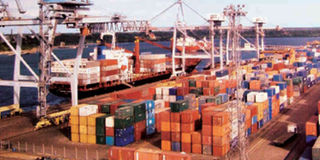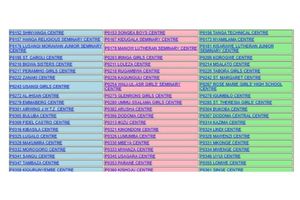Why economic growth remains elusive in EA

The loading and off-loading section at the Dar es Salaam Port in Tanzania. PHOTO | FILE
What you need to know:
- It’s not only the slow ports or bad roads that up the price, it’s old policy and legal habits and slow border crossings across the region
Nairobi. Transport costs in East Africa are among the highest in the world. This is largely due to infrastructure and regulatory constraints but the major reasons for the high costs are policy, legal and regulatory constraints, not infrastructure.
It’s not only the slow ports or bad roads that up the price, it’s old policy and legal habits and slow border crossings.
It takes 28 days and $600 to move a 40 foot container from the port of Shanghai, China to Mombasa, Kenya. It can take almost the same amount of time for the same container to reach Bujumbura, Burundi from Mombasa — at a cost of $8,000. This represents almost thirteen times the cost. Quite frankly, this is ridiculous. There are 130 million people in East Africa with a combined GDP of $173 billion. Endemic poverty still exists in many parts of the region. However, it is not all doom and gloom. Many countries in East Africa are seeing a rise in their middle class and reduction in poverty.
Rwanda and Tanzania, in particular, have recently been pointed out as two of the global star performers in reducing poverty by an Oxford University Poverty and Human Development Initiative report (see the story in The EastAfrican March 23 edition). According to Paul Collier and the World Bank, Rwanda has also been successful in reducing income inequality.
According to the report, Tanzania and Rwanda could eradicate absolute poverty (average person earning less than $1.25 per day) within the current generation. That is exciting news. Interestingly, the report also pointed to trade as a key factor in improving conditions in countries that have been successful in reducing poverty.
Kenya is on the verge of becoming a middle income country (increasing its current $800 per capita income to the middle income level of $1,000) and other countries in the region are not far behind. While this is good news, it is not enough. A per capita income level of $1,000 only means earning $83 per month or less than $3 per day. Nearly 45 per cent of East Africans are still officially poor. A number of questions come up:
Q: What is so important about the regional economic integration process in East Africa and how will it contribute to reducing poverty in the medium to long-term?
Ans: Larger markets allow companies to reap economies of scale, produce a larger set of goods in greater quantities and therefore increase variety and reduce costs for consumers.
If done properly, it can also provide a huge incentive for expansion of business and job creation, the latter currently being a major concern of policy makers in the region.
Q: If regional economic integration is a good thing, then why is it taking so long?
Ans: Change can be extremely difficult to accept, particularly if it destabilises the status quo. To be fair, the European Union took almost five decades to get to where it is now and East Africa has made remarkable progress within a relatively short time frame.
TradeMark East Africa held a one-day seminar earlier this year with high-level participants from the public and private sectors. The key issue discussed was the Single Customs Territory initiative of the East African Community and how to achieve full operationalisation of the EAC Customs Union (and no, we still don’t have a fully functioning Customs Union in East Africa).
A major point of concern was not that revenue authorities were concerned about drastic losses of revenue from implementation of the Customs Union, which was a bit of a shock for me.
In fact, all of the revenue authorities stated they felt relatively comfortable with the systems currently in place and that they could deal with any problems that might arise.
The concern came from several participants from the private sector because they feared that the EAC Customs Union would eliminate or reduce their profit margins. In other words, they did not want competition.
Finally, I have to mention the importance of good economic governance. Personally, I could not care less what economic model is adopted or used. Good economic governance is good economic governance and it is vital to the economic well-being of a country and its citizens.
Rather than dwell on colonial or neo-colonial domination, it is time for Africans to take the lead on management of their resources and to ensure the proper use of those resources.
It takes two to tango
The West is often criticised for plundering African resources, in many cases rightfully so, but they don’t operate in a vacuum. In other words, it takes two to tango. I don’t know how many times I have heard that Botswana is lucky because it has diamonds.
Angola, Sierra Leone and others have diamonds but it hasn’t seemed to do them much good at all. In my opinion, what separates Botswana from those other countries is good economic governance. If you have a vibrant, competitive private sector with good economic governance provided by the public sector, then the opportunity for broad-based, sustainable economic growth and significant reductions in poverty can be a reality.
Among other things, this means stopping the plunder of resources by over-invoicing to divert scarce resources to corrupt pockets.
This is a chronic condition in many cases in public procurement in East Africa. If, for example, a country buys a system for $19 million, one should ask why, when the average cost of a system is around $5-7 million.
What, or who, is the other $14 million for? More importantly, where does it go? To the poor? Does it increase the cost of living for ordinary people? Imagine the $14 million multiplied by fifty or one hundred or more. That’s how commonplace such practices are in our region.
Scott Allen is the deputy CEO of TradeMark East Africa.




